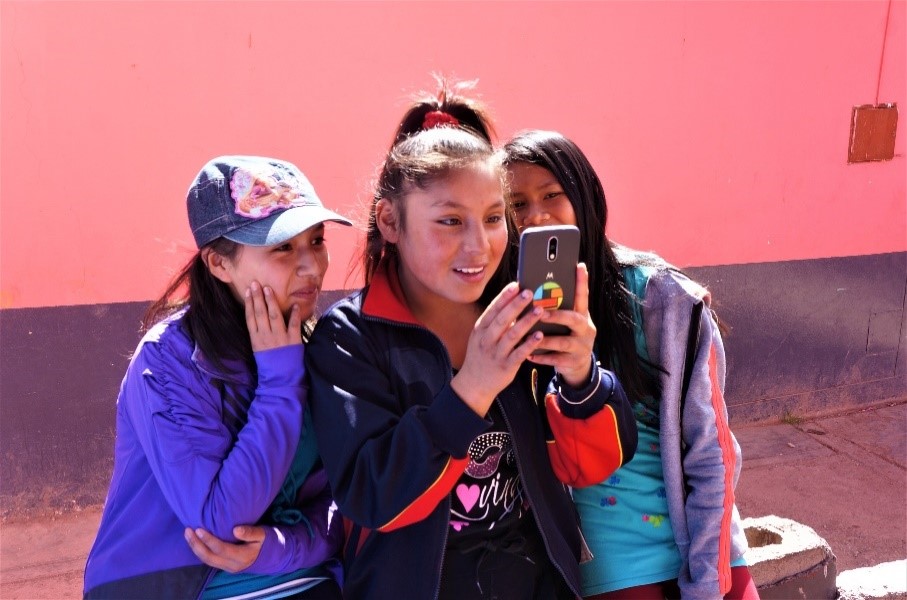Let us know what type of content you'd like to see more of. Fill out our three question survey.
Closing the Gender Digital Divide: What We’re Doing to Bring Women Online
Mar 10, 2020
Digital technologies are revolutionizing the way we access information, financing, and networks—all critical tools for fully participating in the global economy. Yet, these technologies, most notably internet connectivity and mobile phones, are not reaching all people equally. In recognition of International Women’s Day, we are looking at one of the most pressing barriers women face to their economic advancement—the gender digital divide—and how DAI is addressing this problem through the U.S. Agency for International Development’s W-GDP WomenConnect Challenge, implemented by DAI’s Digital Frontiers project. (For the latest information, please read our most recent newsletter).
Why Should We Care About the Gender Digital Divide?
The gender digital divide is the gap between women’s and men’s information and communications technology (ICT) access and use. While 2019 saw record highs for internet adoption and mobile phone ownership—just over half of the world’s population is now online and an estimated 82 percent of women own mobile phones—the figures still show staggering gaps in access for women in many regions of the world.
The GSMA Mobile Gender Gap Report 2020 highlights that more than 300 million fewer women than men access the mobile internet in low- and middle-income countries, and smartphone ownership, a principal way of accessing the internet, is 20 percent lower for women than men. Of the reported 393 million women still without mobile phones, the majority of those are in Southeast Asia (207 million) and sub-Saharan Africa (74 million).
When women are kept offline, everyone is worse off. Digital technologies serve as a vital gateway for women to access the tools and resources needed to start and fund businesses, reach new markets, learn life-saving health information, engage civically, discover new ideas and concepts, build confidence, and gain essential skills for the digital age. Their ability to contribute to their families and the global community is significantly enhanced with greater access and productive use of ICT. GSMA estimates that closing the gender divide in mobile internet use in low- and middle- income countries could generate an additional $700 billion in GDP growth.
While the gap has been closing in some regions, progress overall has slowed suggesting that reaching the last mile of women now offline will require increased creativity and intention as these segments are typically more rural, less educated, and face greater economic and socio-cultural barriers to getting online. Recognizing that the inclusion of women in the digital economy is beneficial for all, it is imperative that the development community, governments, and the private sector continue to make equal access for men and women to digital technologies a priority for their initiatives and programming.
What is DAI Doing to Bridge the Divide?
DAI has been working to address this gap and bridge the divide over the past several years. Currently, DAI’s Digital Frontiers project is implementing an innovative program that seeks to move women’s exclusion from the benefits of ICT from the sidelines to being a driving force and target for effective, long term poverty reduction.
Launched in 2018 by Advisor to the President Ivanka Trump and USAID Administrator Mark Green, the W-GDP WomenConnect Challenge (WCC) is a global call for solutions to improve women’s participation in everyday life by meaningfully changing the ways women and girls access and use technology. Two years after the launch, we have implemented two Challenge rounds and worked with USAID to award more than $2.9 million to 12 grantees working in 14 countries.

WCC grantee Humanitarian OpenStreetMap Team (HOT) partners with schools in Peru to train students to use mapping and surveying tools to raise the awareness of local policymakers about gender-based issues in their community. Photo credit: GAL Group.
WCC is unique in that it focuses both on connectivity and digital solutions with an emphasis on addressing the social and cultural norms that keep women offline and under-empowered. The nine WCC projects in round one are in full swing and each is testing a unique solution with potential for local and global impact. From setting up women-led community internet infrastructure, to working with families, religious leaders, and other powerholders in communities to support greater technology use for women, we are learning firsthand what it takes to meaningfully shift the underlying norms that exacerbate the gender digital divide. See our newsletter for exciting updates on the initiatives and progress of our nine round one grantees.
To realize the full transformative value of getting women online, we need development agencies, technology companies, governments, and communities to come together to create the conditions and norms that remove barriers to meaningful access and use of digital technology for women. As the first round of WCC comes to a close this year, we look forward to sharing more lessons learned and evidence-based insights about how to address the gender digital divide so that we can collectively work to close the gap for good.
Learn More
Visit the WomenConnect Challenge website to learn more about our grantees and access additional resources about the gender digital divide.